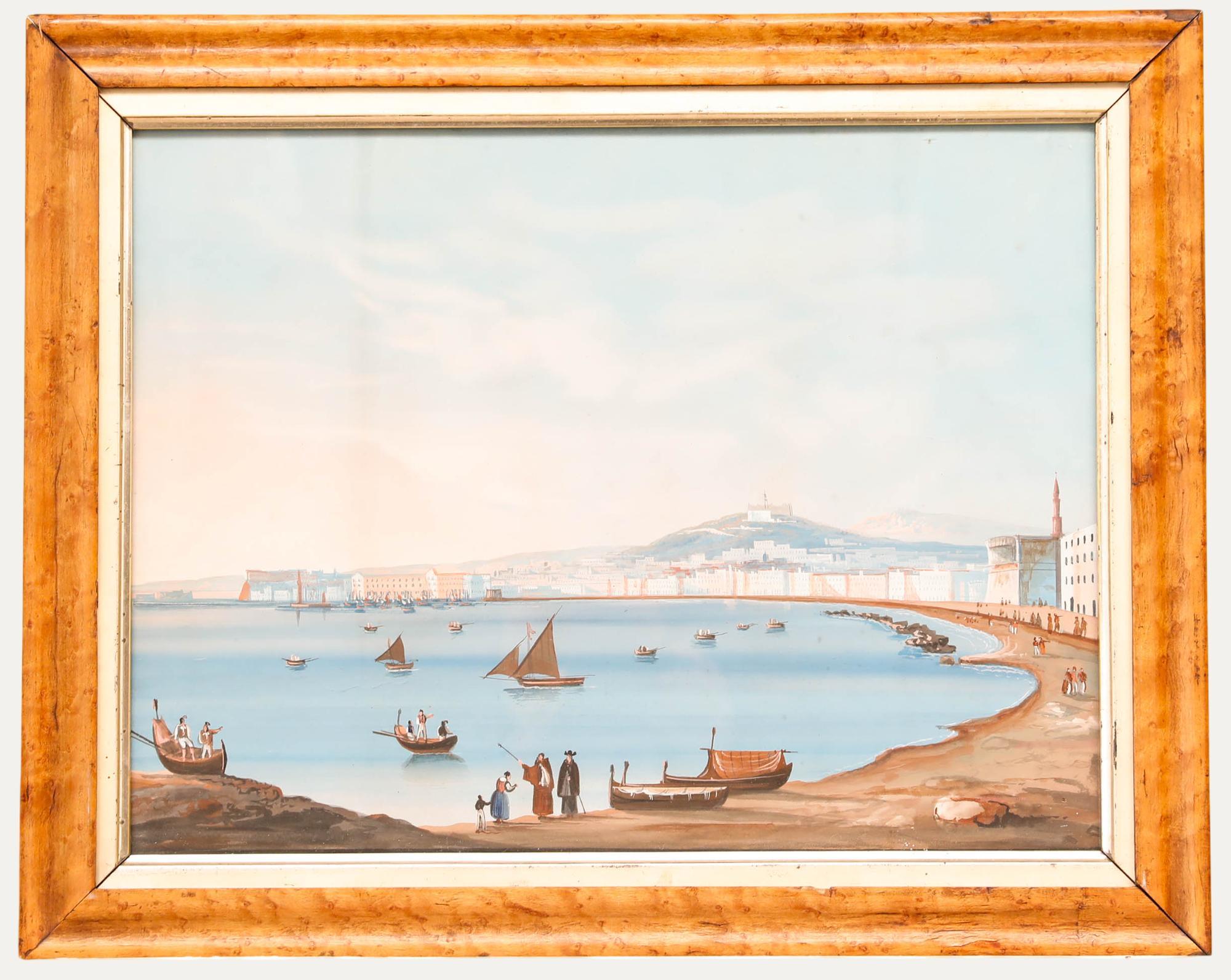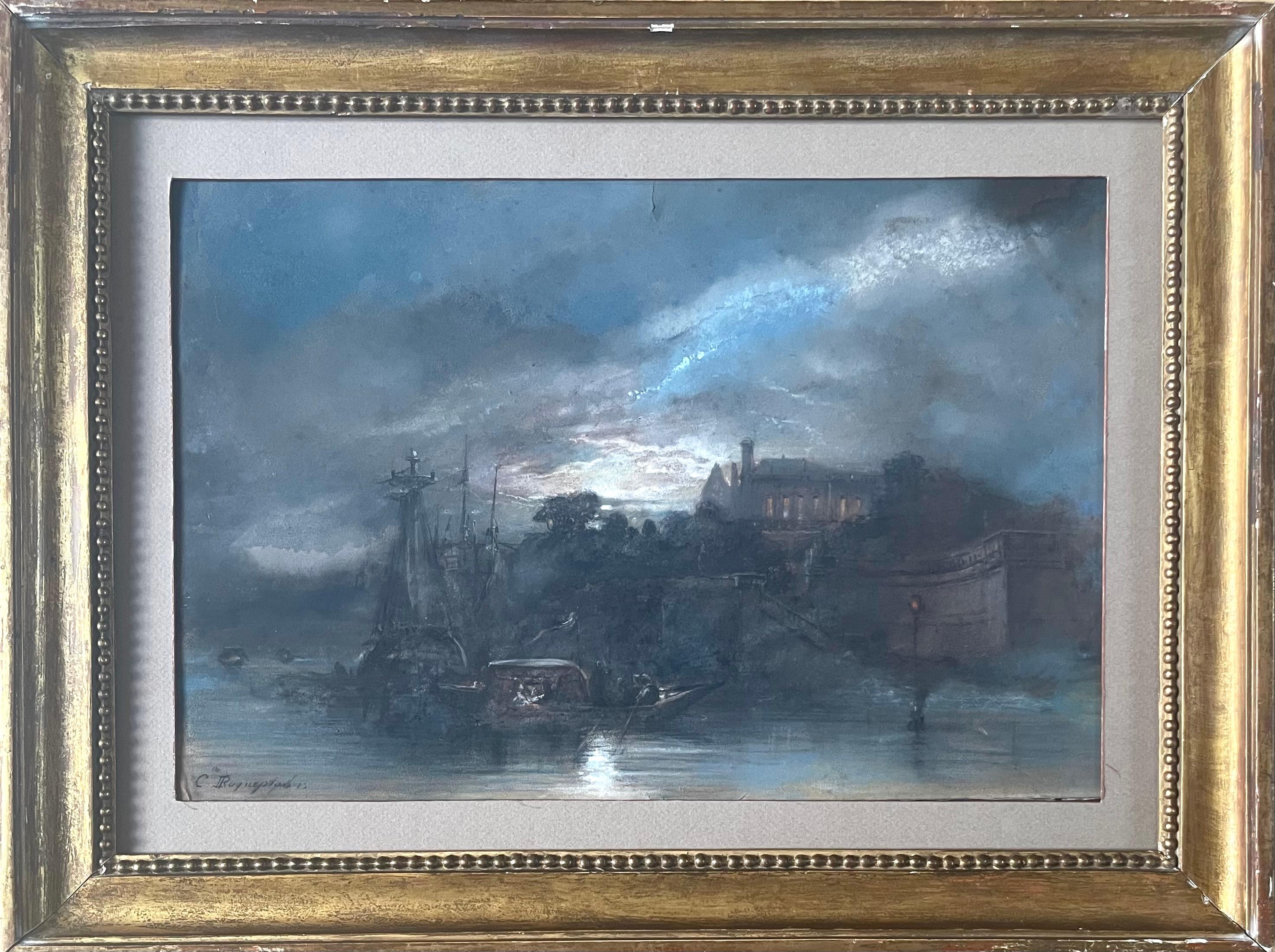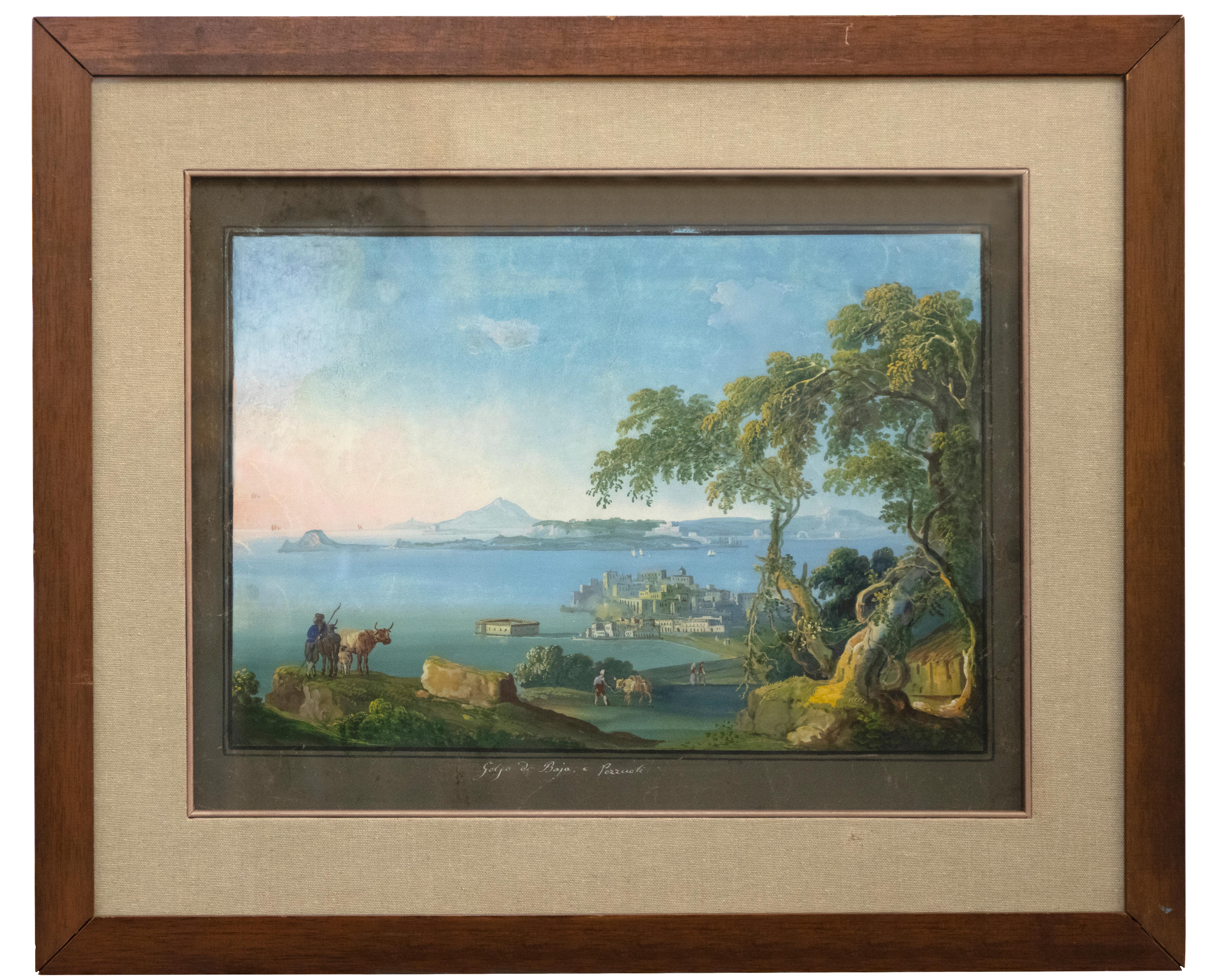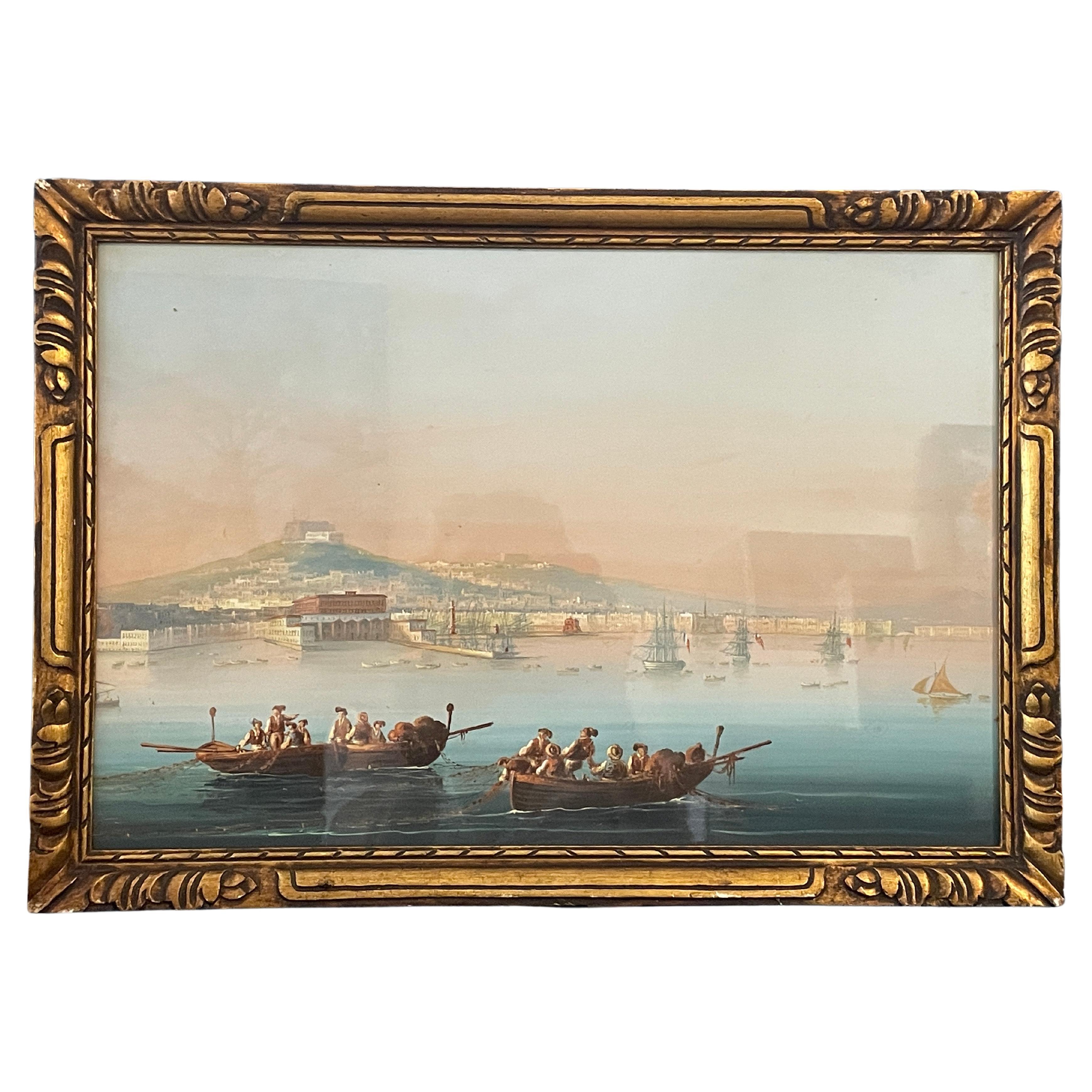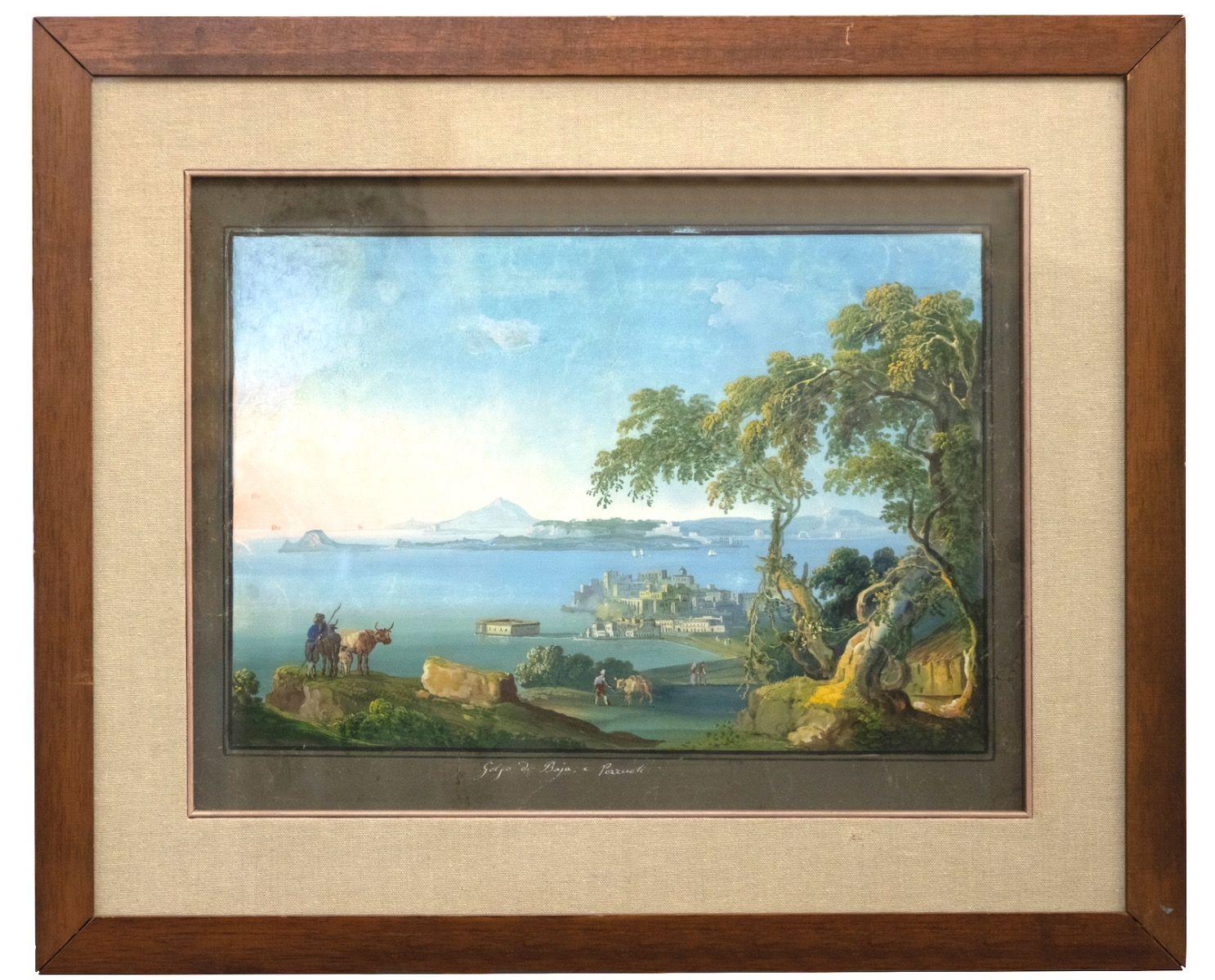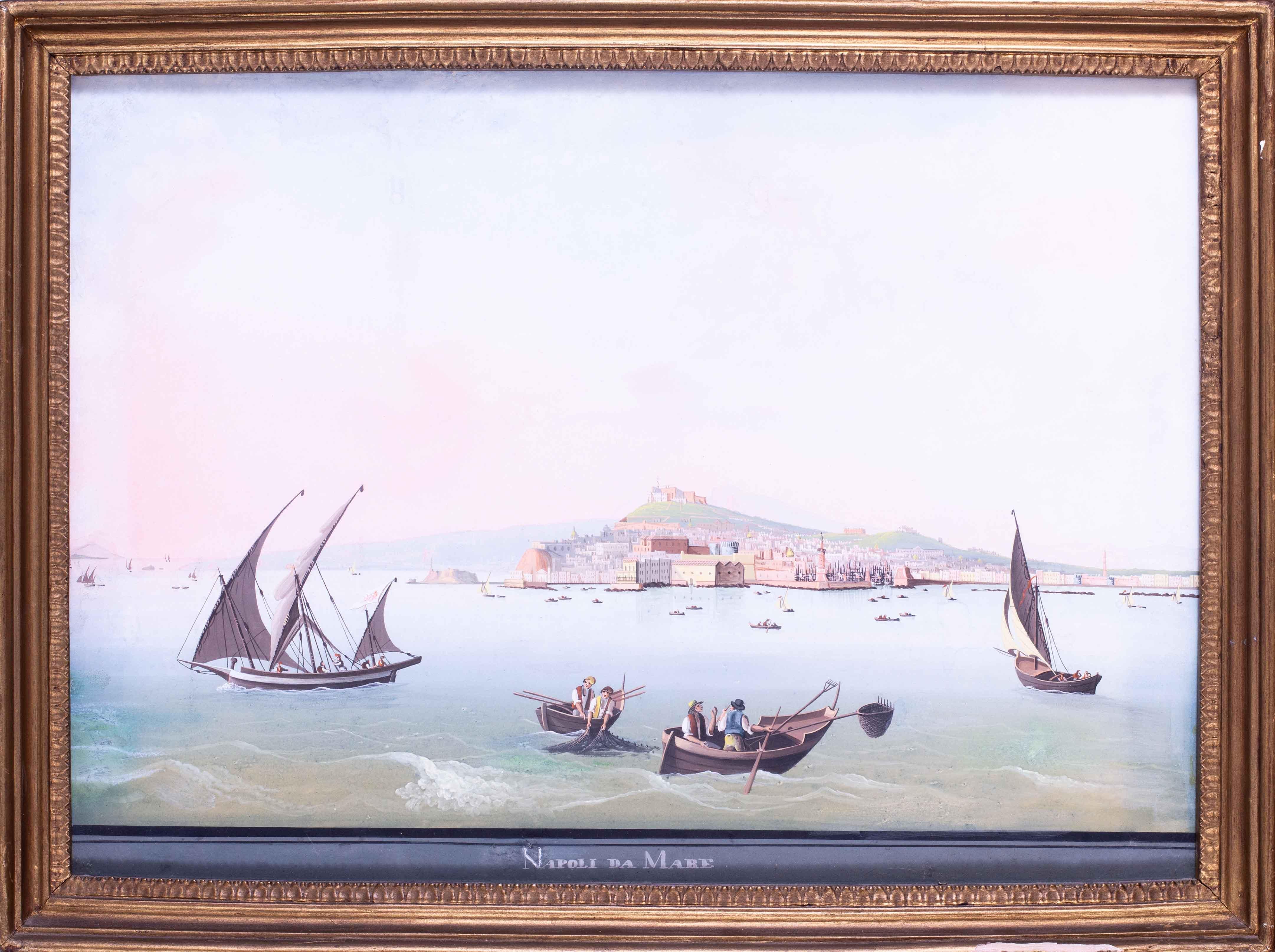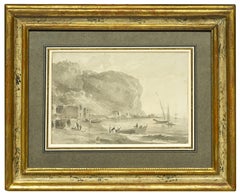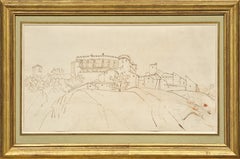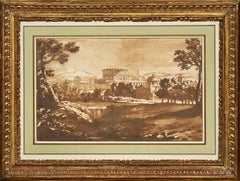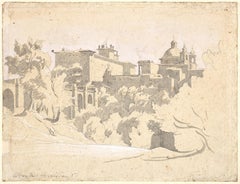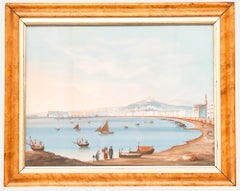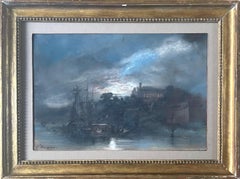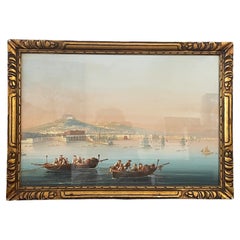Items Similar to View of the Ovo Castle in the Moonlight, a 19th century Neapolitan gouache
Want more images or videos?
Request additional images or videos from the seller
1 of 8
UnknownView of the Ovo Castle in the Moonlight, a 19th century Neapolitan gouachecirca 1830
circa 1830
$1,422.71
£1,064.75
€1,200
CA$1,962.76
A$2,182.67
CHF 1,146.39
MX$26,685.32
NOK 14,285.06
SEK 13,466.95
DKK 9,135
About the Item
Neapolitan gouaches appeared in the eighteenth century when tourism in the Naples area was developing: the discoveries of Herculaneum and Pompeii made this city a mandatory stop on the Grand Tour, the journey made by wealthy Europeans to complete their education.
Generally small in size for ease of transport and affordable in price, these gouaches were the ideal travel souvenir that these tourists of the early days were bringing back to capture the idyllic landscapes they had discovered during their journey and to share them with family and friends upon their return at home.
The Bay of Naples and the eruptions of Vesuvius are the favourite themes of these views. Here we have a view of the Ovo Castle, which was rebuilt on the island of Partenope, in the middle of the Bay of Naples and about a hundred metres from the shore by the Normans in the 12th century on antique ruins. Its name (Egg Castle in Italian) derives from a legend attributed to the poet Virgil: a sorcerer is said to have deposited a magic egg under the foundations of the castle which, if it disappeared, would lead to the ruin of the city.
The quayside, today’s Via Partenope, has always been lined with luxurious hotels, and one might think that this is one of the reasons why this view has been chosen as a souvenir for tourists. The execution of the painting, which is quite lively, the costumes of the characters at the water's edge, the romantic atmosphere on a full moon evening, clearly indicate that we are dealing with a gouache from the first half of the nineteenth century, a period which corresponds to the end of the production of these gouaches, which were soon to be supplanted by the development of photography.
We have chosen to frame this gouache in a French giltwood frame from the Restoration period, following the tradition that these travel souvenirs were framed by their owners after their return in a frame from their country, without any reference to the country where the gouache had been executed.
- Creation Year:circa 1830
- Dimensions:Height: 12.19 in (30.97 cm)Width: 14 in (35.56 cm)
- Medium:
- Movement & Style:
- Period:
- Condition:7 ½’’ x 9 5/8’’ (19 x 24.5 cm) - Framed 12 3/16’’x 14” (31 x 35.5 cm) French Gilded wood frame from the Restoration period (1815 - 1830).
- Gallery Location:PARIS, FR
- Reference Number:1stDibs: LU1568211773882
About the Seller
5.0
Vetted Professional Seller
Every seller passes strict standards for authenticity and reliability
Established in 2020
1stDibs seller since 2021
10 sales on 1stDibs
Typical response time: 3 hours
- ShippingRetrieving quote...Shipping from: PARIS, France
- Return Policy
Authenticity Guarantee
In the unlikely event there’s an issue with an item’s authenticity, contact us within 1 year for a full refund. DetailsMoney-Back Guarantee
If your item is not as described, is damaged in transit, or does not arrive, contact us within 7 days for a full refund. Details24-Hour Cancellation
You have a 24-hour grace period in which to reconsider your purchase, with no questions asked.Vetted Professional Sellers
Our world-class sellers must adhere to strict standards for service and quality, maintaining the integrity of our listings.Price-Match Guarantee
If you find that a seller listed the same item for a lower price elsewhere, we’ll match it.Trusted Global Delivery
Our best-in-class carrier network provides specialized shipping options worldwide, including custom delivery.More From This Seller
View AllView of the Posillipo coastline near Naples by William Marlow (1740 - 1813)
By William Marlow
Located in PARIS, FR
In this drawing, inspired by his stay in Naples in 1765, William Marlow presents us with a view of Cape Posillipo, to the west of Naples, an essential stage during the Grand Tour. Th...
Category
1760s Old Masters Landscape Drawings and Watercolors
Materials
Ink
View of a Mansion in the South of France, a drawing by Claude-Joseph Vernet
By Claude-Joseph Vernet
Located in PARIS, FR
We would like to thank Madame Beck-Saiello for confirming the autograph nature of this drawing after an in-person examination.
It was probably during an excursion in the countryside near Avignon that Claude-Joseph Vernet executed this drawing, enhanced with pen and brown ink, depicting a mansion on a hilltop overlooking a small village with geometric shapes.
1. Joseph Vernet, a painter influenced by Italy
Claude-Joseph Vernet was born in Avignon in 1714, the son of Antoine Vernet (1689-1753), an artisan painter of architectural decorations, coach panels, and the like. He moved to the studio of Philippe Sauvan (1697-1792), a leading history painter in Avignon, and then worked with Jacques Viali (active 1681-1745), a decorative, landscape, and marine painter in Aix-en-Provence. Vernet's first recorded paintings were decorative overdoors executed in 1731 in the Aix townhouse of the marquise de Simiane. In 1734, Joseph de Seytres, marquis de Caumont, a leading amateur in Avignon, sponsored Vernet to make a study trip to Italy to complete his artistic education and to draw antiquities for his patron.
As Avignon was a papal territory in Vernet's day, he also had a number of useful introductions among influential churchmen when he arrived in Rome. Vernet was soon at home in the French community there, and he was encouraged by Nicolas Vleughels (1668-1737), director of the Académie de France in Rome, even though the young painter had no official affiliation with the royal institution. He likely entered the studio of the French marine painter Adrien Manglard...
Category
1730s Old Masters Landscape Drawings and Watercolors
Materials
Ink, Laid Paper, Pen, Carbon Pencil
View of an Antique City, a wash landscape by Jan de Bisschop (1628 - 1671)
Located in PARIS, FR
The attribution to Jan de Bisschop has been confirmed by the RKD with the following comment: "We base this attribution on the dark washes, the subject represented and the monogram".
...
Category
17th Century Old Masters Landscape Drawings and Watercolors
Materials
Ink, Pen
View of Ariccia, a preparatory drawing by Achille Bénouville (1815 - 1891)
Located in PARIS, FR
This very modern drawing presents a view of Ariccia, a small town 25 kilometres south-east of Rome. The Palazzo Chigi (in which the film-maker Luchino Visconti would film a large part of The Leopard a century later) and the adjoining church are seen from the bottom of the ravine that surrounds the town. This drawing is a moving testimony to the attraction of the city for artists of the Romantic period, who established in Ariccia a vivid artists' colony.
1. Achille Bénouville...
Category
1850s Romantic Landscape Drawings and Watercolors
Materials
Ink, Gouache, Pencil
View of Piazza San Marco, a tempera signed by Giacomo Guardi (1764 - 1835)
Located in PARIS, FR
Signed and localized on the verso :
"Vedute di parte dalla Piazza dif.a alla Loggetta e cam
panil parte della Zecca ed in lontan Proc.e vechie e parte della chiesa
punto preso vic...
Category
Early 19th Century Old Masters Landscape Drawings and Watercolors
Materials
Tempera
Rocky Landscape with Trees and Temple Ruins a drawing by Giulio Parigi (ca 1615)
Located in PARIS, FR
This Rocky Landscape with Trees and the Ruins of a Temple is a drawing by Giulio Parigi, an eclectic and prolific artist of the Medici court. An engraver, architect, furniture and je...
Category
1610s Old Masters Landscape Drawings and Watercolors
Materials
Ink, Laid Paper, Pen
You May Also Like
Neapolitan School 19th Century Gouache - View from the Bay
Located in Corsham, GB
A vibrant 19th-century gouache painting depicting a detailed daytime view of the Bay of Naples, Italy. The work has been beautifully presented behind glass in an elegant burr maple f...
Category
19th Century Figurative Drawings and Watercolors
Materials
Gouache
Romantic landscape, View of an imaginary palace by the water, Pastel, Signed
Located in PARIS, FR
Camille ROQUEPLAN
Mallemort 1803 - 1855 Paris
Romantic landscape, View of an imaginary palace on the banks of a river
Pastel on strong paper
Signed lower left
26.5 x 38 cm
38 x...
Category
1830s Romantic Landscape Drawings and Watercolors
Materials
Pastel
The Gulf and the Bay of Pozzuoli - Neapolitan Gouache - 19th Century
Located in Roma, IT
Titled on lower center.
Sheet 36.4x49 / Frame 54.7 x 66.5.
Beautiful 19th century representation of the Gulf and the Bay of Pozzuoli near Naples.
Good conditions, includes a conte...
Category
19th Century Figurative Paintings
Materials
Gouache
19th century Gouache, "View of the Gulf of Naples"
Located in Belmont, MA
Explore the enchanting beauty of a 19th-century gouache painting depicting the breathtaking Gulf of Naples in Italy.
This exquisite artwork, crafted with the opaque watercolor mediu...
Category
Antique 1820s Paintings
Materials
Paper
The Gulf and the Bay of Pozzuoli - Gouache - Early 19th Century
Located in Roma, IT
Titled on lower center.
Image 36.4x49 - 14.33 x 19.29 in. / Frame 54.7 x 66.5 - 21.54 x 26.18 in.
Beautiful 19th century representation of the Gulf and the Bay of Pozzuoli near Nap...
Category
Early 19th Century Modern Figurative Paintings
Materials
Gouache
19th Century Italian gouache painting of Mount Vesuvius and Naples, summertime
Located in Petworth, West Sussex
A beautiful and naive painting of Naples from the sea in summertime from the 19th Century. The beautiful light blue tones of the sea highlight the architecture of Naples and Vesuvius beyond.
Circle of Gioacchino La Pira...
Category
19th Century Academic Landscape Paintings
Materials
Paper, Gouache
More Ways To Browse
19th Century Gouache
Nineteenth Century Drawings
19th Century Painting Castle
19th Century Painting Of Castle
Antique Neapolitan
Neapolitan Painting
Landscape Paintings 19th Century French Unknown
19th Century Moon Painting
Castle Ruins
Eighteenth Century French Painting
Bay Of Naples
Grand Tour Watercolour
Vesuvius Painting
Gouache Naples
19th Century Landscape Moonlight
Neapolitan Gouache
Gouache Vesuvius
Antique Painting Pompeii
